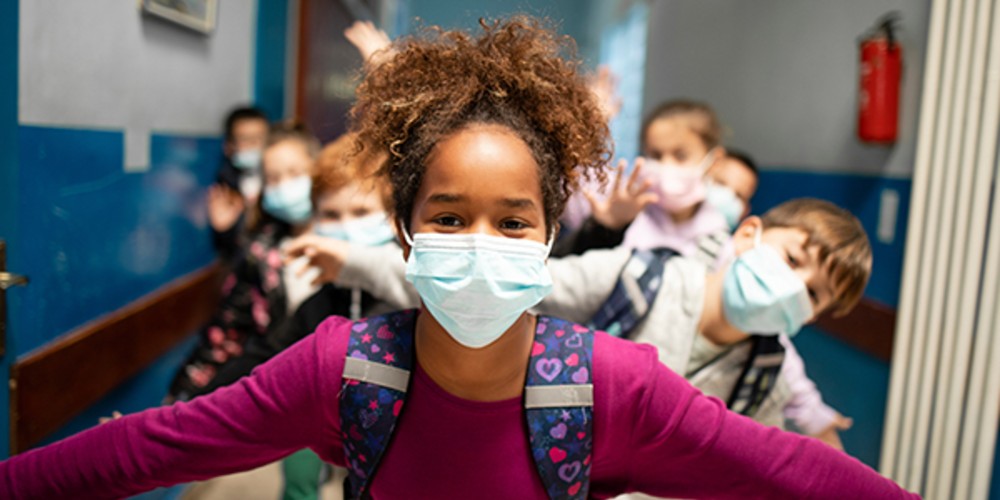Subscribe for free to the America First Report newsletter.
(Natural News)—Four years ago, most people had no idea what Covid-19 could bring, and so plenty of common sense, logic and even scientific basis flew out the window when trying to prevent ourselves from catching it, or worse, dying from it. We were all lied to about almost everything, but many of us caught on to those lies early on, especially when it came to the vaccines and the mask wearing. First off, you simply can’t breathe properly with a Covid mask on, of any kind, and there’s plenty of science (we’re talking over 150 studies) to back up the many BAD health outcomes that come from wearing a Covid face diaper regularly.
Pay it forward 4 years now, and some germophobic fanatics are STILL wearing their Covid face diapers 24/7/365, even when they are alone in the car, or walking outside alone. It’s insanity on top of insanity, but you see it all around you every day. These folks never read REAL science about the dangers of wearing these masks all the time. For instance, not only do the masks breed bacteria in the mouth, throat and lungs, but they limit proper oxygen intake, while recycling what you already breathed in and used. This is very bad folks. Follow the bouncing ball.
Oxygen deprivation, also known as hypoxia, can come on slowly over time, leading to many of the horrific health outcomes that the Covid jabs also create
No wonder so many Democrats and Liberals are suffering from Trump Derangement Syndrome, because most of them are still wearing their Covid masks. Whether you got the N95, the cheap China-made toxic ones, or you made one yourself from a scarf or a bandana, one thing they all have in common – you’re breathing in your own carbon dioxide. This has several effects. It’s toxic, leading to initial symptoms of headaches, drowsiness and acidic blood.
Then comes the brain fog, anxiety, memory loss, bacterial infections, lowered cognition, and then eventually cancer and respiratory acidosis. Lastly, lowered immune function kicks in, making you MORE susceptible to the very thing you were hoping to stave off – infectious disease. Oops. How ironic. The CO2 literally acts as an asphyxiant, displacing oxygen in the air. Fauci knew this from the beginning.
Feeling shortness of breath and a rapid heart rate? That could be the effects of the mask and the Covid clot shots. Here comes that rapid breathing again, and the restlessness coughing and wheezing. You might start feeling dizzy and need to sit down. As they say, “take a mask break” (like forever).
Oxygen Deprivation Mask Syndrome (ODMS), after 4 years, is kicking in full gear, and all the mask wearers are suffering big time
Dial it back to April of 2020, when the World Health Organization (WHO) recommended masks for sick people and health care workers, not for everyone else. Then, two months later, they switched their tune, and recommended everyone wear one 24/7/365, without any science to back it up. In fact, the science goes completely the opposite direction.
Randomized trials did NOT show a clear reduction in respiratory viral infection from wearing masks. Not surgical masks or N95. That’s because the holes in the masks are much larger than the viral particles, so it’s like a basketball flying through a hula hoop. The pandemic hype was off the charts, and the whole China Flu scamdemic turned out to be fear-based propaganda meant to control the masses and kill off several million people. It worked.
By 2021, research revealed that prolonged use of Covid masks cause up to 20 percent loss of oxygen, leading to hypoxia and hypercapnia (excessive carbon dioxide in the bloodstream).
Children’s brains were affected, especially during the developmental years. Fetal and embryonic development was decimated from pregnant mothers who wore their face diapers all day, putting themselves at high risk for developing ODMS.
Research out of Brown University found children who wear a mask all day at school suffer brain damage and declines in their IQ. Add some fluoridated water and some Fauci clot shots and what have you got? Mask-related changes in respiratory physiology do bodily harm to blood gases, decreasing oxygen while increasing CO2. This causes detriment to the organ systems and metabolic processes, impacting physical and psychological well-being. Get it?
It’s slow torture and it affects everyone who wears a mask regularly, especially for FOUR LONG YEARS, which can result in permanent neurological damage and irreversible brain damage. Tune your internet dial to NaturalMedicine.news for more tips on how to use natural remedies for preventative medicine and for healing, instead of succumbing to Big Pharma products that cause, spread and exacerbate disease and disorder.
Sources for this article include:
What Would You Do If Pharmacies Couldn’t Provide You With Crucial Medications or Antibiotics?
The medication supply chain from China and India is more fragile than ever since Covid. The US is not equipped to handle our pharmaceutical needs. We’ve already seen shortages with antibiotics and other medications in recent months and pharmaceutical challenges are becoming more frequent today.
Our partners at Jase Medical offer a simple solution for Americans to be prepared in case things go south. Their “Jase Case” gives Americans emergency antibiotics they can store away while their “Jase Daily” offers a wide array of prescription drugs to treat the ailments most common to Americans.
They do this through a process that embraces medical freedom. Their secure online form allows board-certified physicians to prescribe the needed drugs. They are then delivered directly to the customer from their pharmacy network. The physicians are available to answer treatment related questions.







